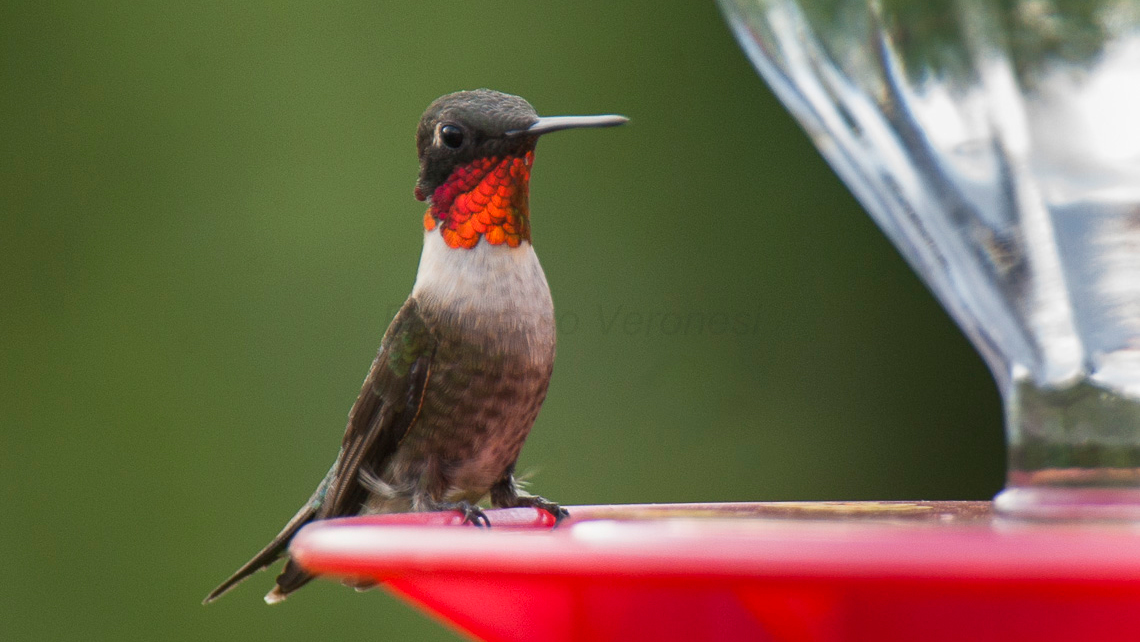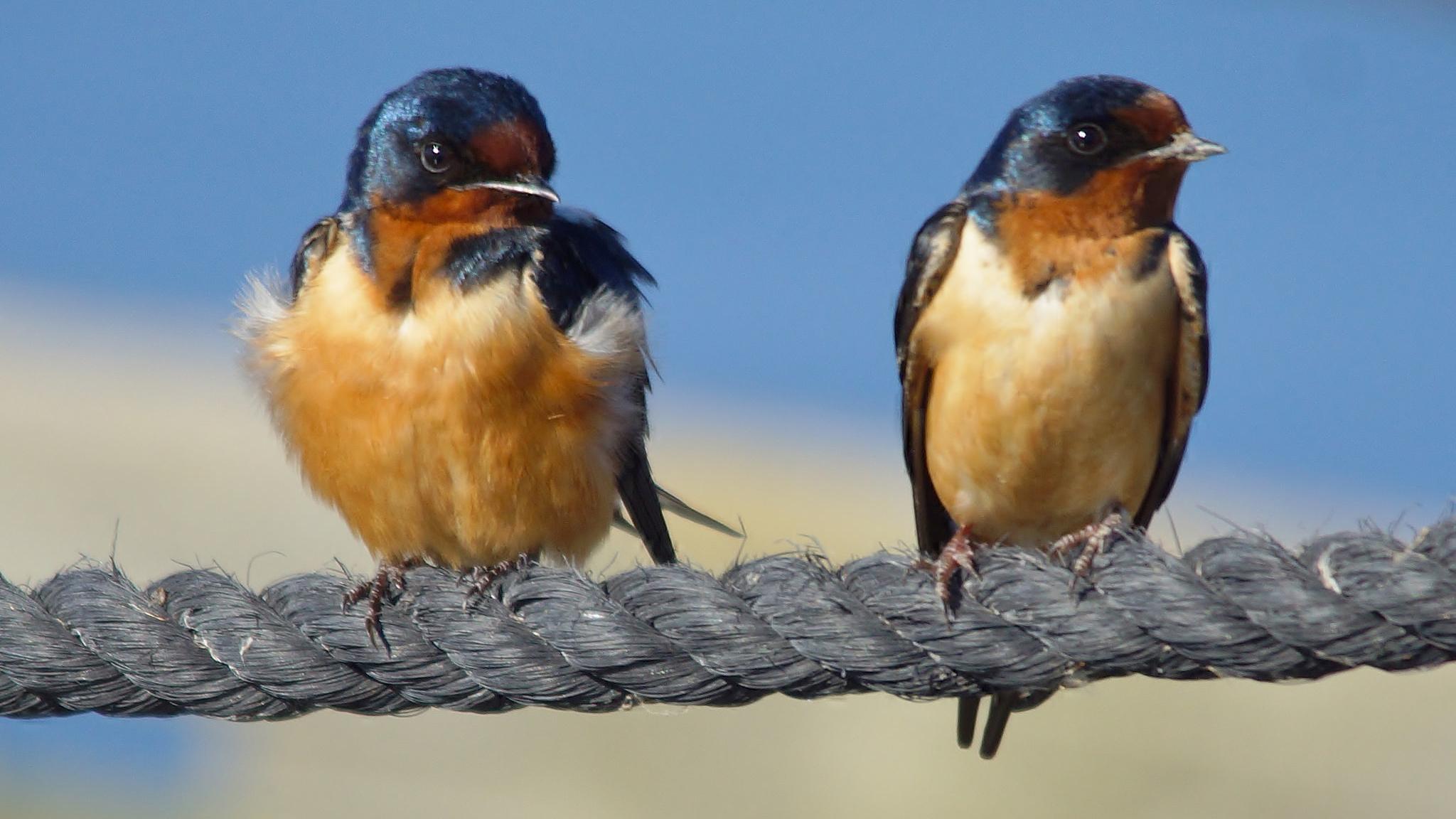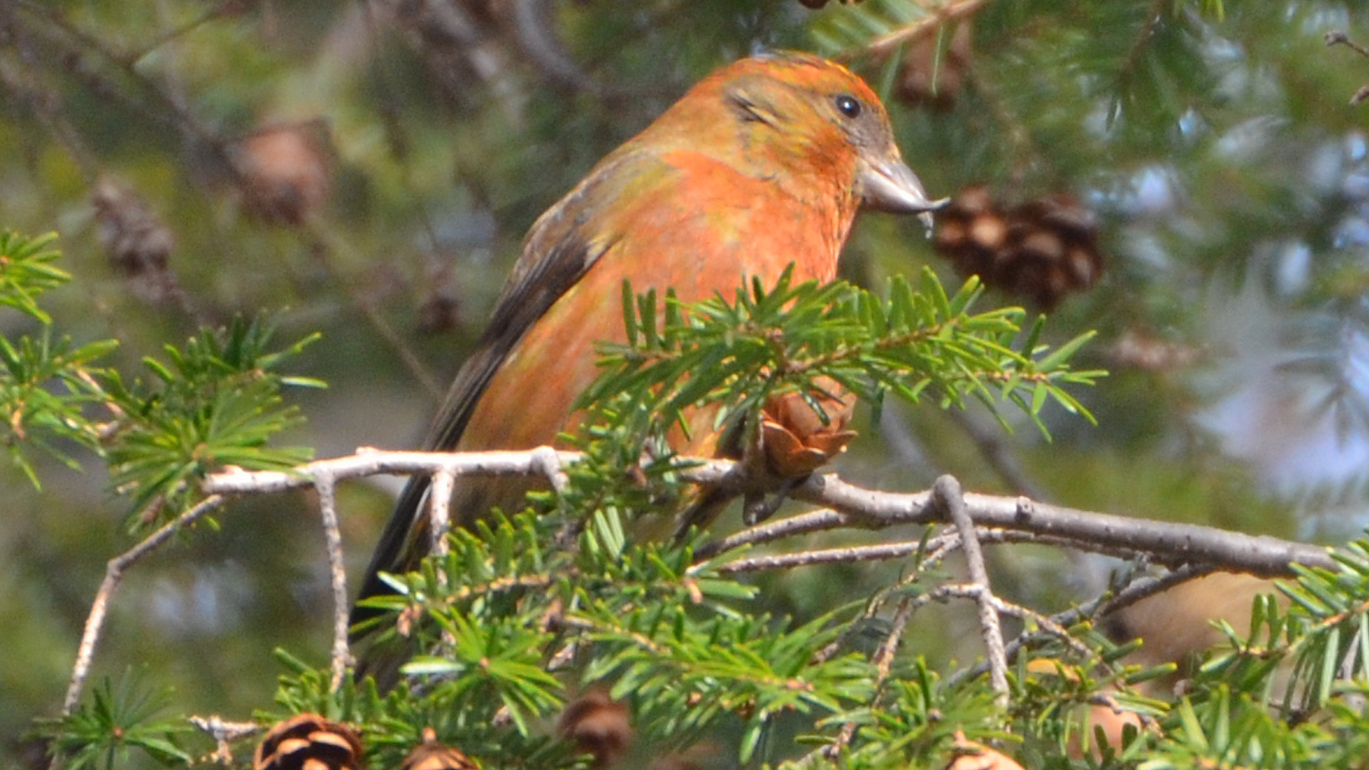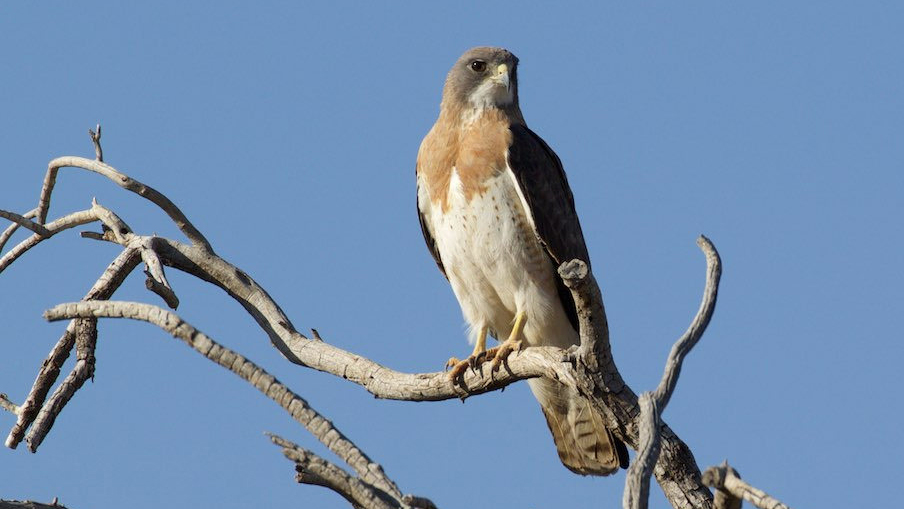Even as a kid, Kevin McGowan considered himself fairly bird aware. He tallied 12 species he found in his yard and parks in his Ohio town.
He was a little off.
“I started birding with people who knew things… when I started paying attention and listening, I amassed 75 species.”
Why the difference?
It was mostly because of migrants, he says. Birds like warblers, tanagers and orioles were there, making their way from north to south and back again.
McGowan is now an ornithologist with the Cornell Lab of Ornithology, and his childhood experience isn’t unique.
“People often don’t notice this stuff. And there are incredible stories… One of the smallest of the warblers, they basically leave the country in the fall headed to northern South America over the Atlantic,” he says “The bulk of them you don’t see, but on the return trip, they flood through the central and eastern parts of the U.S. on their way to the Boreal forest.”
What you observe from your backyard or neighborhood park obviously varies by where you live.
A California resident will likely never see a Baltimore oriole snacking at the backyard feeder, and a New Englander won’t see a Western tanager. But no matter where you are, you will find winged migrants moving from one patch of food to another.
McGowan and Marshall Iliff, eBird Project leader with the Cornell Lab, recently described some of the most impressive bird migrations you can see near you that you just might be missing.

Ruby-Throated Hummingbird
People used to think ruby-throated hummingbirds rode on the backs of Canada geese while the much larger bird migrated. But that’s selling the little guys short.
The tiny creature weighs less than a nickel and manages to fly nonstop each year across the Gulf of Mexico. You read that right. A hummingbird treks, without stopping, from the Yucatan Peninsula to Louisiana.
“I’ve been in the Gulf and looked up and saw the hummingbirds shooting overhead,” says Iliff.
How do they do it?
“By packing on fat and energy and having a strategy for where to go. And they’re really efficient fliers.”
The ruby-throated hummingbird is also the only hummingbird to breed in the eastern half of the continent. There’s a festival each year in Rockport, Texas to celebrate the birds on their way south. People put out feeders and watch as hundreds of the typically-solitary birds flock to pack on pounds – or, more accurately, a gram or two.
Anyone living along the Gulf can see them in the spring and in even higher numbers in the fall, and can increasingly spot them throughout the winter. Keep flowers blooming in your yard, Iliff recommends, and maintain your feeders. They’re quite faithful, so if they discover your yard, they’re likely to continue returning on their impressive journeys.

Barn Swallow
You’ve likely seen them. Barn swallows live across the Lower 48 where they build mud nests under bridges and overhangs and in – you guessed it – barns. They streak through the air in the early morning and late evening scarfing up flying insects by the hundreds.
Very few overwinter in the U.S. Most barn swallows migrate through Mexico and Central America down to Argentina and Chile.
And in an interesting turn of evolution, some started to stay in South America where they are taking advantage of increased infrastructure.
“They live in culverts and the latitude south of the equator is the same as north of the equator,” Iliff says.
Something allowed the birds to switch, and those that breed in North America overwinter in Argentina at the same time as others breed in Argentina and overwinter in Brazil.
“You can tell them apart sometimes because some are actively molting and growing new feathers and some are defending their nests as they breed.”
Before they migrate, they gather in massive flocks of up to hundreds of thousands of birds. Swallows typically spend time in groups, but these stagings in places like Texas are particularly impressive.
The barn swallow, like its cousin the cliff swallow, is declining in numbers. Iliff isn’t sure why, though it is likely tied to the use of pesticides that kill insects that swallows eat.
But they’re still plentiful in many places.

Red Crossbill
Most birds migrate from north to south and back again. It makes sense. Food supplies change with weather, so when winter settles in up north, they go south. Similarly, when spring breathes life into the north, they head back up.
In a strange twist that even ornithologists are trying to better understand, the red crossbill also wanders east to west.
More specifically, they follow pinecone crops.
“If the spruce forest doesn’t have cones in it one year, the whole population will move to another area that does,” Iliff says. “How they know where to go to find it is the biggest mystery.”
Many of the cone crops in the West, such as the Douglas firs in the Rocky Mountains, failed this year. That means red crossbills are headed east into the plains where people have planted spruce trees. Birders can find them scattered in towns from Kansas to New York.
“Birds don’t always do what you think they do, and the better technology gets to track birds, we’re finding birds do crazy stuff that we have no idea they could do or why they’re doing it,” McGowan says.

Swainson’s hawks
Raptors are a symbol of the West. They rule the prairie from their perches high in trees or on telephone poles and soar over ridgelines. They’re as rugged as the people who settled in some of the country’s coldest, harshest conditions.
And most frequently, they’re associated with being loners, typically gathering only to mate or share a particularly large kill.
But as with many species, exceptions can be made. One of those is the Swainson’s hawk.
They’re one of the most common birds of prey in open prairie in the summer, but virtually all of them leave North America in the winter.
Before they go, they gather in massive flocks.
“You will see hundreds of birds at the same time and they go to the center of South America,” says McGowan.
Anyone living in the plains through most of the spring, summer and fall can see groups of Swainson’s hawks hunting grasshoppers. But those living in a 50-mile swath of the center of southeast Texas into Mexico can watch for the raptors to swarm together.
“It’s basically a river of hawks that flows from Corpus Christi to Vera Cruz and Panama City. Once they come through the Isthmus of Panama they funnel out,” Iliff says.




University of Montana researchers are beginning to investigate how birds and their fellow forest dwellers communicate. They’ve timed some messages at over 100 MPH. North Cascades Institute is offering a course on Corvids this July, (virus permitting) by one of these U of M folks. Dr. Green (sp?)spoke here in Winthrop WA , recently about this so far little understood, but amazingly fast and detailed avian grapevine.
How can the invisible disappear? Well, of course many birds are insect eaters including barn swallows and flycatchers which are pretty scarce around south-central Iowa these days. Monarch butterflies get a lot of attention because they used to be plentiful and easy to identify. Now, of course, they are scarce. But so are other butterflies and insects of many, many species. What happened to the insects? Perhaps you don’t notice that there are far fewer insects splattered on the car windshield. Insecticides were designed to kill insects and they do – just about all insects. Insect eating birds have tended to become scarce, especially in the past ten to fifteen years. Even robins have a tough time what with all the poison sprayed on lawns. It’s not easy being a bird.
Think I saw Cedar Waxwings today.
“Amazing birds”.
What types of bird’s can I expect to see in Michigan? Also I get some hawks that sit in the trees at my home. It’s color is slate gray. It has a white breast with thin horizontal gold lines intermittently across the breast. I can’t find it in my bird books. Any idea? It has mated in one of my large trees near the woods a number of times over the years and established a nest.
Hi Gary, Thank you for the question! If you have a smartphone, I suggest you try the free Merlin app from Cornell: http://merlin.allaboutbirds.org/ My colleague loves it: https://blog.nature.org/2015/08/25/ode-to-merlin/ You might also be interested in this list of birds of Michigan from Wikipedia: https://en.wikipedia.org/wiki/List_of_birds_of_Michigan
Two weeks ago I saw two different flicks of Canada Geese heading north. I’m in Nebraska where our date to be safe from frost is April 27th.
Also, saw a robin last Thursday. I’m a newcomer to the Midwest for I’m Southern California. How do the birds keep warm?
And are the huge flocks of small, dark birds that stay here all winter Starlings or something else?
Hi Barbara, Here is a good article by Joe Smith on how birds stay warm in winter: https://blog.nature.org/2016/01/19/how-birds-stay-warm-cold-winters-night/
It would be hard to say what the flocks of birds are without a picture for better identification. If you have a photo, I suggest submitting it to iNaturalist. The community there is usually very quick to identify birds and very accurate.